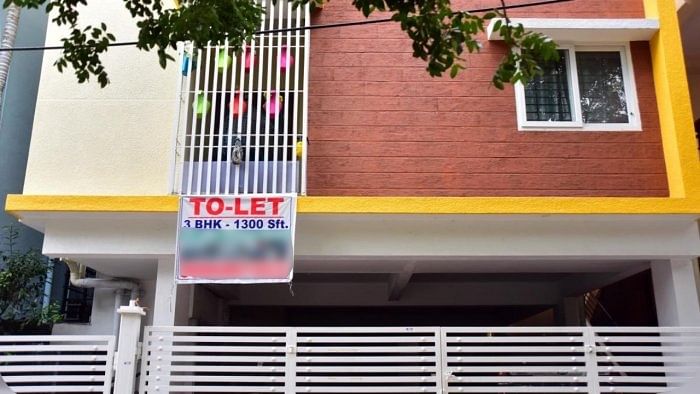
Bengaluru's rental housing market is facing an unprecedented crisis as the work-from-home culture, job losses and the general economic distress caused by the pandemic have pushed many people out of the city.
Unoccupied residential units are a common sight in a city that had a booming residential property market just a few months ago.
'To let' notices have sprung up on the gates and compounds of homes in residential areas across the city in the last few months. Landlords, who took hefty loans to construct homes, are now struggling to pay the EMIs as reduced rentals have failed to draw tenants.
Sheshadri and his wife, who live in Jayanagar, depend on the rental income from a two-bedroom house but haven't found a tenant despite four months of search. The previous tenants, a young couple from Davangere, left Bengaluru after their employers allowed them to work from home until December 2021. "There have hardly been any enquiries since," Sheshadri says.
Ditto with Harsha, a graphic designer from HSR Layout, as his newly-built house remains unoccupied. The EMI of Rs 22,000 on his home loan is biting into his savings. For him, the house was an investment as well as an assured source of income to pay off the EMI. "It has instead become a liability," he says.
Market watchers say housing rentals fell by up to 25% in 2020 due to the cascading impact of the pandemic.
Anuj Puri, Chairman, ANAROCK Property Consultants, says the rental market was hit in all cities, not just Bengaluru. "Residential rentals during the year dipped anywhere between 10% and 25% across several micro markets in top cities depending on the property, facilities on offer, etc. Vacancies in housing societies also began to rise significantly, even in those which remained full during the pre-Covid period," he says.
At the same time, he says, the past year gave tenants the room to bargain hard. "This was particularly true in markets or projects where the supply outstripped the demand. However, since rental negotiations vary from case to case, it cannot be classified as a general trend. But one common trend seen in lease renewal cases was that landlords were not increasing the yearly rentals (usually around 5%-10%)," he explains.
Mani Rangarajan, Group COO, Housing.com, Makaan.com and PropTiger.com, says tenants were not only going back to their hometowns but were also moving to the city's outskirts in order to pay lower rent and get bigger homes to accommodate separate WFH rooms. While the demand for rental homes has come down in popular areas, the outskirts are reporting a marginal increase in rentals, which are still lower than those in established neighbourhoods, he adds.
According to Rangarajan, Bengaluru has seen a correction of 15%-20% in rentals. Market information suggests that tenants are moving to places such as Murugeshpalya, Yelahanka, Sarjapur and Bellandur.
The reduced demand has forced landlords to go all the way to retain tenants because many of them (landlords) have to pay for maintenance and the EMIs. "Rather than keep the house empty, they prefer to give extra benefits to tenants and retain them," he says.
Brokers hit
Vasu, a home broker in Padmanabhanagar, said his earnings were first hit by housing rental websites. The pandemic has now dealt a crushing blow to it. "The landlords that I still deal with are being forced to reduce the rentals by 25%," he said.
Puri noted that the pandemic has brought a big shift in brokerage. "Brokers are very much part of the Indian housing market, whether rental or purchase. The real estate brokerage industry is on its next leg of evolution, leveraging technology as a competitive advantage," he added.
He forecasts the housing rental market to remain subdued so long as WFH continues and suggests that landlords cut the rent instead of keeping the homes vacant. "In order to attract tenants at previous rentals, the homes should be fully furnished and more functional, like plug and play. Landlords can add facilities such as working desks, Wi-fi, AC, bright interiors, etc. Sanitation measures are also a must," he adds.